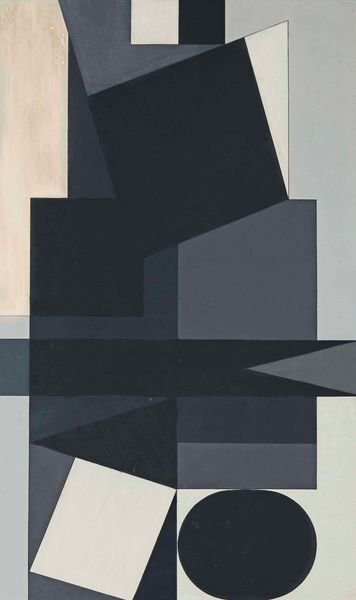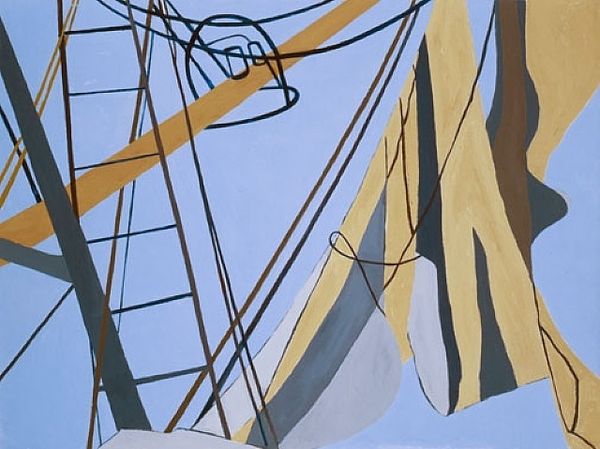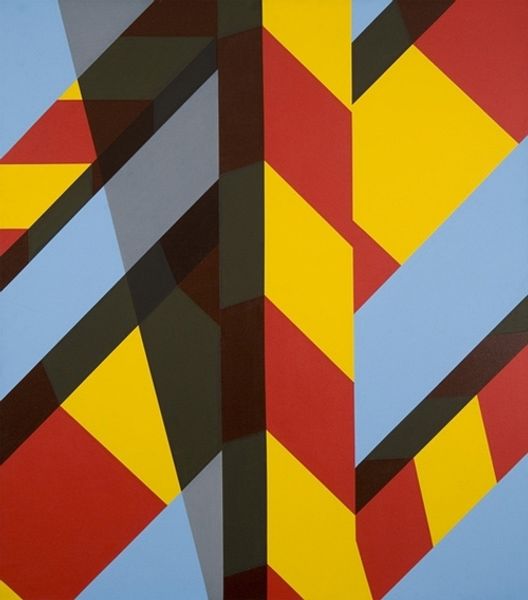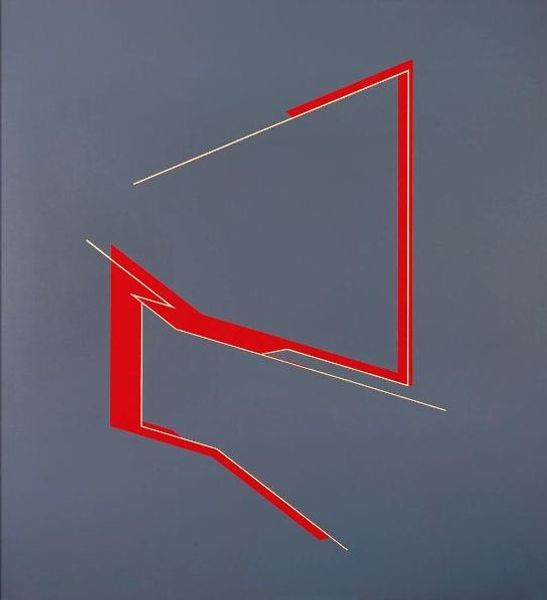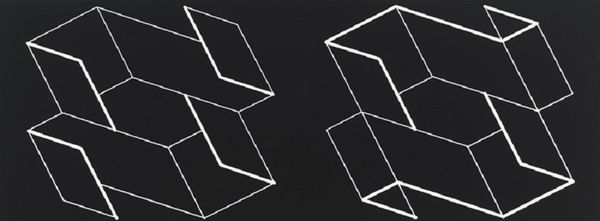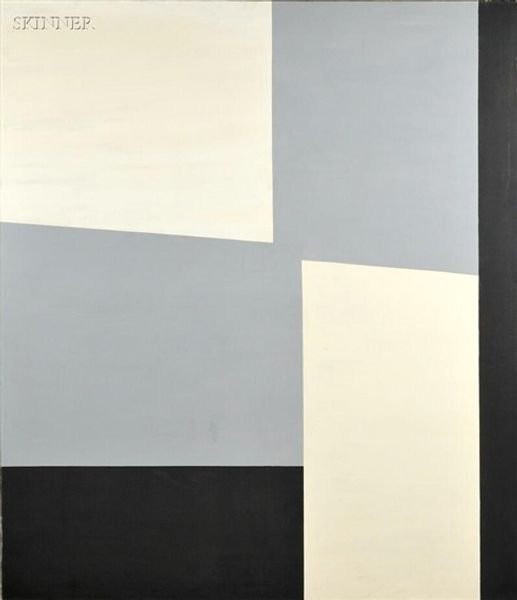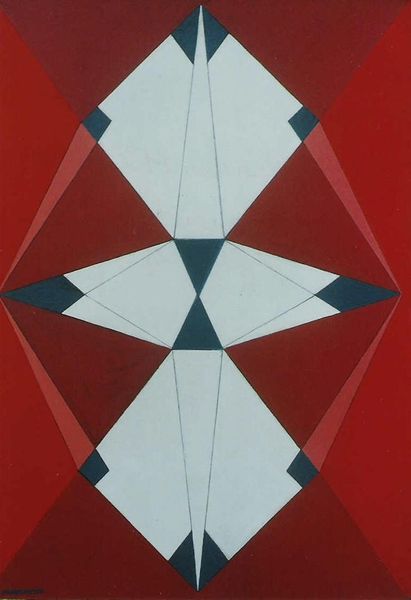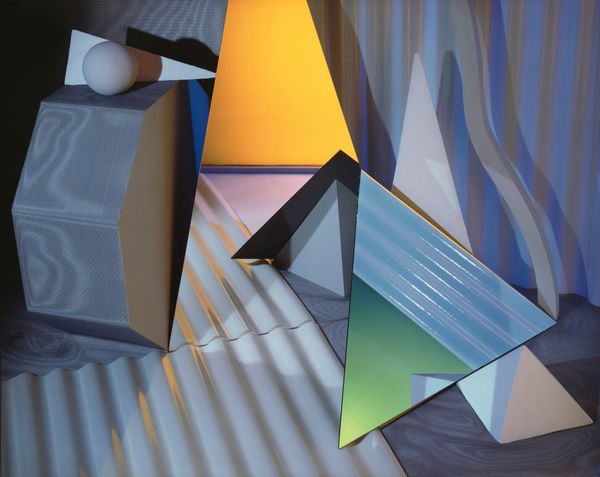
painting, acrylic-paint
#
painting
#
op art
#
acrylic-paint
#
geometric
#
geometric-abstraction
#
abstraction
#
line
#
modernism
Copyright: Fernando Lanhas,Fair Use
Editor: This acrylic painting, titled "081-45-05" is by Fernando Lanhas, but doesn’t have a specific date attached to it. The pale lines cutting through the contrasting dark and light blues create a really strong sense of depth. How do you interpret this work, considering the period in which Lanhas was creating art? Curator: Lanhas’ geometric abstraction certainly speaks to a larger historical moment, specifically the rise of modernism and geometric art. The stark lines and the lack of identifiable subject matter challenged traditional artistic conventions and academies. Where do you see his work fitting within broader art movements and socio-political forces? Editor: Well, I see elements of Op Art because of the optical illusion-type effect that creates the feeling of depth, though Lanhas isn’t one of the bigger names associated with that movement. Given that abstract art moved to the forefront because artists had experienced events they couldn’t put into words, would that apply here? Curator: Potentially. One lens would be considering its departure from realism during a time of significant societal upheaval, you might find yourself seeing a rejection of the established order. Do you see any symbolism, any sort of visual commentary on society present in these geometric forms and muted colors? Or perhaps, is its lack of explicit social commentary a statement in itself, particularly for the historical setting of Portugal at the time? Editor: I suppose that the painting could either express optimism at technological advancement by alluding to new heights in architectural designs, or function as an acknowledgement that progress can feel unbalanced or inaccessible for some. Thanks so much, this has definitely helped me appreciate Lanhas’ work on a deeper level. Curator: It's fascinating to consider how abstract art both reflected and shaped the socio-political landscapes. Reflecting on the painting through a historical and societal point of view allows one to appreciate art's purpose in culture!
Comments
No comments
Be the first to comment and join the conversation on the ultimate creative platform.
